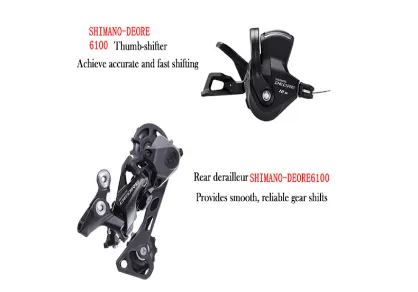
- Afrikaans
- Albanian
- Amharic
- Arabic
- Armenian
- Azerbaijani
- Basque
- Belarusian
- Bengali
- Bosnian
- Bulgarian
- Catalan
- Cebuano
- Corsican
- Croatian
- Czech
- Danish
- Dutch
- English
- Esperanto
- Estonian
- Finnish
- French
- Frisian
- Galician
- Georgian
- German
- Greek
- Gujarati
- Haitian Creole
- hausa
- hawaiian
- Hebrew
- Hindi
- Miao
- Hungarian
- Icelandic
- igbo
- Indonesian
- irish
- Italian
- Japanese
- Javanese
- Kannada
- kazakh
- Khmer
- Rwandese
- Korean
- Kurdish
- Kyrgyz
- Lao
- Latin
- Latvian
- Lithuanian
- Luxembourgish
- Macedonian
- Malgashi
- Malay
- Malayalam
- Maltese
- Maori
- Marathi
- Mongolian
- Myanmar
- Nepali
- Norwegian
- Norwegian
- Occitan
- Pashto
- Persian
- Polish
- Portuguese
- Punjabi
- Romanian
- Russian
- Samoan
- Scottish Gaelic
- Serbian
- Sesotho
- Shona
- Sindhi
- Sinhala
- Slovak
- Slovenian
- Somali
- Spanish
- Sundanese
- Swahili
- Swedish
- Tagalog
- Tajik
- Tamil
- Tatar
- Telugu
- Thai
- Turkish
- Turkmen
- Ukrainian
- Urdu
- Uighur
- Uzbek
- Vietnamese
- Welsh
- Bantu
- Yiddish
- Yoruba
- Zulu
Oct . 21, 2024 12:34 Back to list
powered bicycle
The Rise of the Powered Bicycle Revolutionizing Urban Mobility
In recent years, the landscape of urban transportation has been transformed by the growing popularity of powered bicycles, often referred to as e-bikes. These innovative machines blend traditional cycling with electric-powered assistance, providing an efficient and eco-friendly alternative to cars and public transport. As urban areas continue to grapple with congestion, pollution, and the need for sustainable transport solutions, powered bicycles are emerging as a crucial player in the quest for smarter mobility options.
Powered bicycles are equipped with an electric motor that assists the rider during pedaling. This feature allows individuals to cover greater distances with less effort, making cycling more accessible to a diverse range of people, including those who might find traditional biking physically challenging. Whether commuting to work, running errands, or simply enjoying a leisurely ride, e-bikes are removing barriers and encouraging more individuals to embrace cycling as a viable mode of transportation.
One of the most significant advantages of powered bicycles is their positive environmental impact. With urban air quality deteriorating and climate change becoming an urgent global concern, the move towards sustainable transportation is paramount. E-bikes produce zero emissions when ridden, contributing to cleaner air and reduced urban noise. Furthermore, they promote a shift away from fossil fuel reliance and encourage individuals to leave their cars at home, helping to alleviate traffic congestion in bustling cities.
powered bicycle

The convenience of e-bikes also cannot be overstated. In many urban environments, traffic jams and parking challenges are commonplace, leading to frustratingly long commutes. Powered bicycles provide an efficient solution by allowing riders to navigate easily through heavy traffic and find parking with minimal hassle. Many cities have recognized this advantage and are investing in dedicated bike lanes and infrastructure to support the growing number of e-bike riders, thus fostering a more bike-friendly culture.
Additionally, the versatility of powered bicycles is noteworthy. Various models cater to different needs, from lightweight city bikes to robust mountain bikes, and even cargo e-bikes designed for transporting goods. This diversity means that whether someone is an avid cyclist or a complete novice, there is an e-bike option that suits their lifestyle. Moreover, advancements in battery technology have led to longer ranges and faster charging times, enabling users to travel further without the anxiety of running out of power.
However, the rise of powered bicycles does come with its challenges. Safety remains a significant concern, as e-bikes can travel at higher speeds than traditional bicycles. This has prompted discussions around regulations, helmet use, and rider education. Cities are beginning to implement specific guidelines to ensure the safety of both e-bike riders and pedestrians, striking a balance between promoting this new mode of transport and safeguarding public safety.
In conclusion, powered bicycles represent a transformative advancement in the realm of urban mobility. By blending the joy of cycling with the benefits of electric assistance, e-bikes are paving the way for a more sustainable and efficient future. As cities embrace this shift, they must focus on creating supportive infrastructures and safety measures to ensure that powered bicycles can thrive alongside traditional forms of transportation. With continued investment and innovation, e-bikes are poised to play a significant role in reshaping our cities and creating a healthier, greener environment for all.
-
The Ultimate Kids' Four-Wheeler Experience
NewsJul.09,2025
-
The Ultimate Guide to Mountain Bikes: Gear Up for Your Ride
NewsJul.09,2025
-
The New Age of Cycling: Electric Bikes for Every Rider
NewsJul.09,2025
-
The Best Kids Bicycles: Ride in Style and Safety
NewsJul.09,2025
-
The Best 3-Wheel Scooters for Kids: Fun, Safety, and Adventure
NewsJul.09,2025
-
Revolutionize Your Ride: Affordable Electric Bikes
NewsJul.09,2025
-
Finding the Perfect Mountain Bike for Every Rider
NewsJul.09,2025



